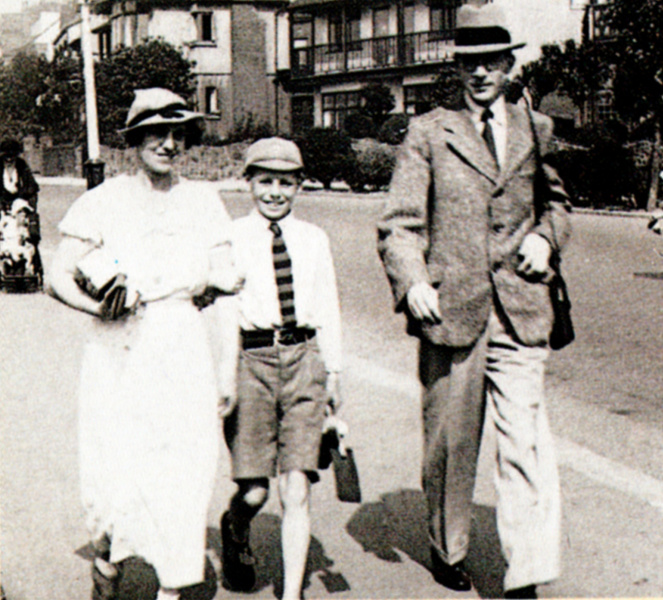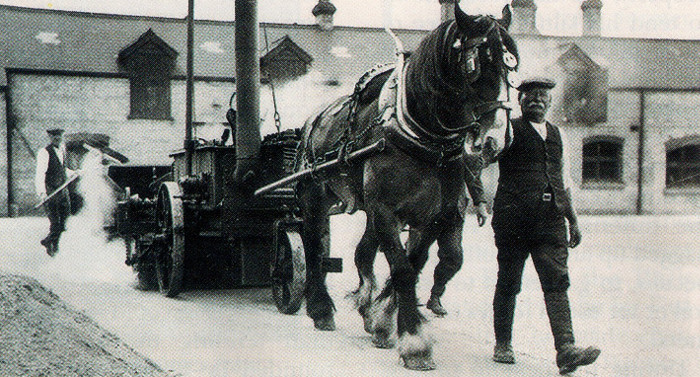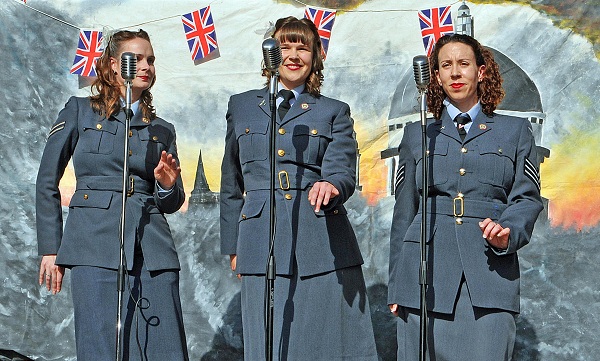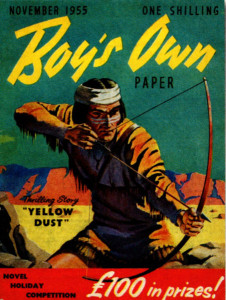
Who remembers the BOP – the Boy’s Own Paper? My own yellowing copies from the early 50s provide a snapshot of what the teenage lad of that era did, (or what adults thought he did).
He was a serious youth, clean-living, inhabiting a world without girls, in which spare time was devoted to Biggies, model-making or outdoor interests. In fact there has never been a time when boys didn’t anticipate manhood by aspiring to or experimenting with wine, women and song – but the life projected to readers of BOP remained pure, macho and purposeful.
The Boy’s Own Paper, (which had been founded and published by the Religious Tract Society from 1879 to 1939), was designed to entertain, inform and educate and, of course, always had a Christian feel about it.
A major difference from the comics of later years was its coverage of contemporary issues. A report on boy miners in Africa (July 1956) reminded English boys how well off they were. BOP explained the social issues of the day – the operation of agencies such as UNICEF, or smoking, or the ‘colour bar’.
Scientific innovations such as vertical take-off aircraft were featured and there were far-sighted articles about the world’s power needs. Atomic power was mentioned but, amazingly, the possibilities of solar and wind power were also discussed. As early as January 1954, there was an article entitled New Look Windmills Will Provide Power, covering a prototype being erected near St Albans.
The fictional content mainly comprised moral tales with tame storylines couched in restrained language. Stories of the ‘wild west’ appeared regularly, as did those centred on WWII, particularly the work of Capt W. E. Johns. Then there were jungle adventures which can be described as having a ‘colonial’ flavour – definitely non-PC nowadays.
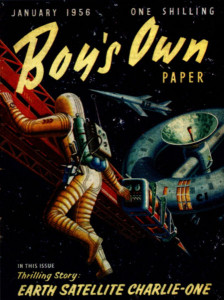 Gradually the dominance of the old adventures was breached by tales of outer space. The space race and a shortage of scientists was a major talking point, so articles on scientific and technological subjects appeared regularly.
Gradually the dominance of the old adventures was breached by tales of outer space. The space race and a shortage of scientists was a major talking point, so articles on scientific and technological subjects appeared regularly.
Features on careers almost invariably concentrated on the same fields, most frequently engineers, chemists and jet pilots.
Careers advertisements pointed the same way. There were monthly appeals from establishments wanting lads to train as seagoing radio officers. Illustrations of warships at full speed supported the Royal Navy’s offers of ‘splendid opportunities to the right type’, while companies such as GEC and Metropolitan-Vickers invited applications for engineering apprenticeships. In those days, the services were expanding and Britain had major players in heavy industry, and all were vying for 16-year-old school leavers.
Overriding the adverts for air rifles, primus stoves, tents, model-making kits and the obligatory chemistry sets, the bicycle dominated the ads pages. The 60 ads included at least 15 for bikes or cycling accessories, from Brooks saddles -endorsed by world champion Reg Harris -to Ever Ready light sets. Midland saddle bags and Fibrax brake blocks.
Prices reflect the time – a Mars bar cost 5d; £15 would buy a bicycle from Hercules, Phillips or BSA. A hand-sewn leather football could be bought for 21 /6d, or a hike tent purchased for five guineas (both probably cost less, relatively, now).
Personal grooming and body care was limited to advertisements for toothpaste, razors and Brylcreem. Charles Atlas (the original seven stone weakling) suggested that a muscular body would win the ‘respect of any man and the admiration of every woman’ – a rare reference to the fairer sex.
Other outdoor activities featured monthly were watching wildlife and the Outward Bound experience. This was the heyday of editor Jack Cox, and writers Showell Styles and Ronald English, renowned for their associations with Scouting, camping and cycling. Sports claimed plenty of space: winter issues featured stars of rugby and soccer while the May issue of the same year covered the career of distance runner Gordon Pirie.
Model making was a major interest as were ‘collecting’ pastimes, particularly philately with a whole page of dedicated small-ads. There were articles on woodworking, photography and radio construction and for cerebral types, chess problems and puzzles such as Leonard Gribble’s Ten Minute Mystery – a brain-teaser in a detective story.
Every month there would be a book feature and reviews of films. In 1954 two of the films reviewed were Richard Todd’s Rob Roy, and King of the Khyber Rifles with Tyrone Power – both tales of ‘daring do’!
Why did the Boy’s Own Paper cease publication in 1967? Since the mid 1950s, television had provided an alternative to hobbies and home-made entertainment. Coffee bars and skiffle began to transform teenage life; the BOP no longer fitted the times.
All that is left of it is the expression ‘very Boy’s Own Paper’, when referring to some deed of ‘daring do’ – a reminder of a more innocent and, perhaps, a better spent youth.




